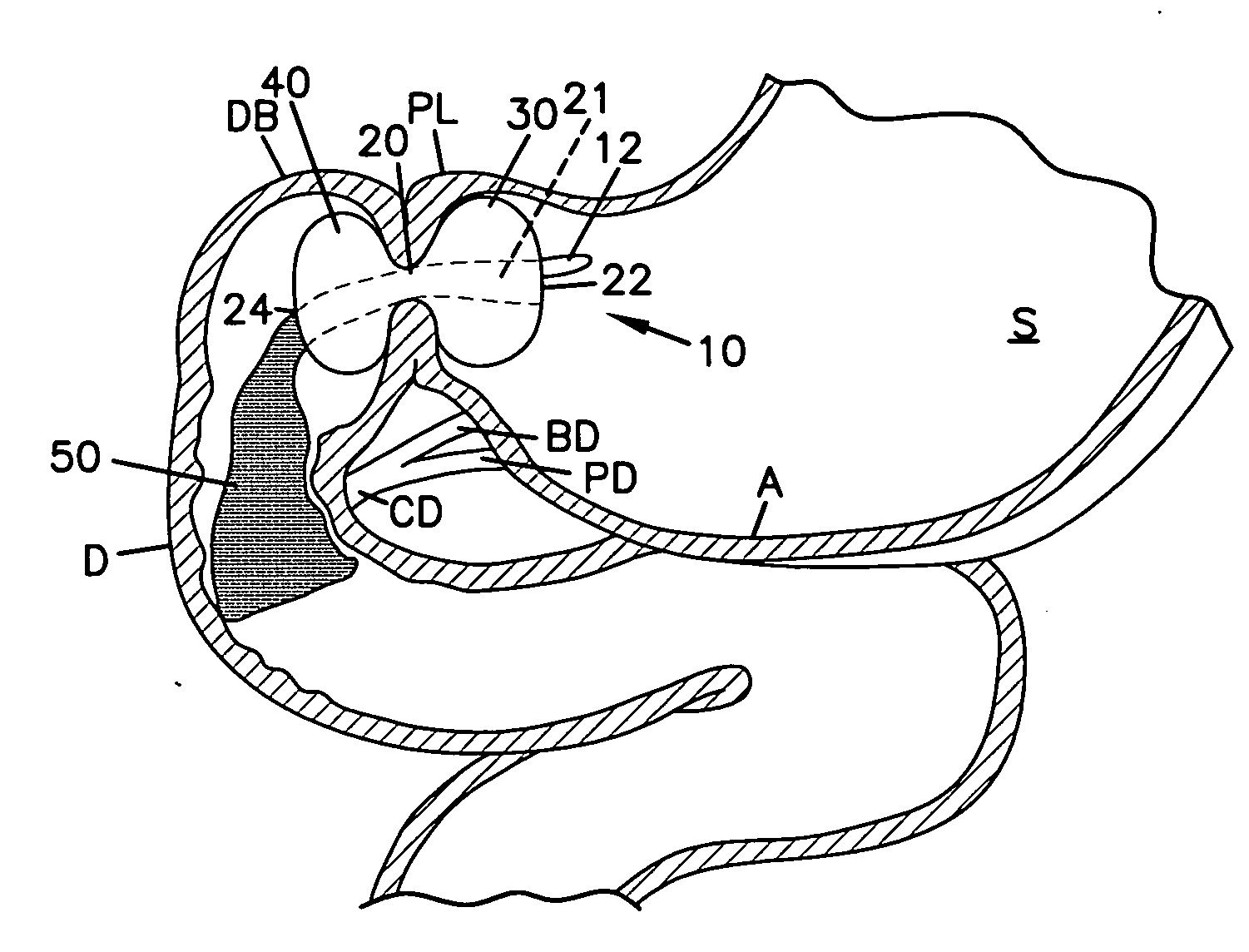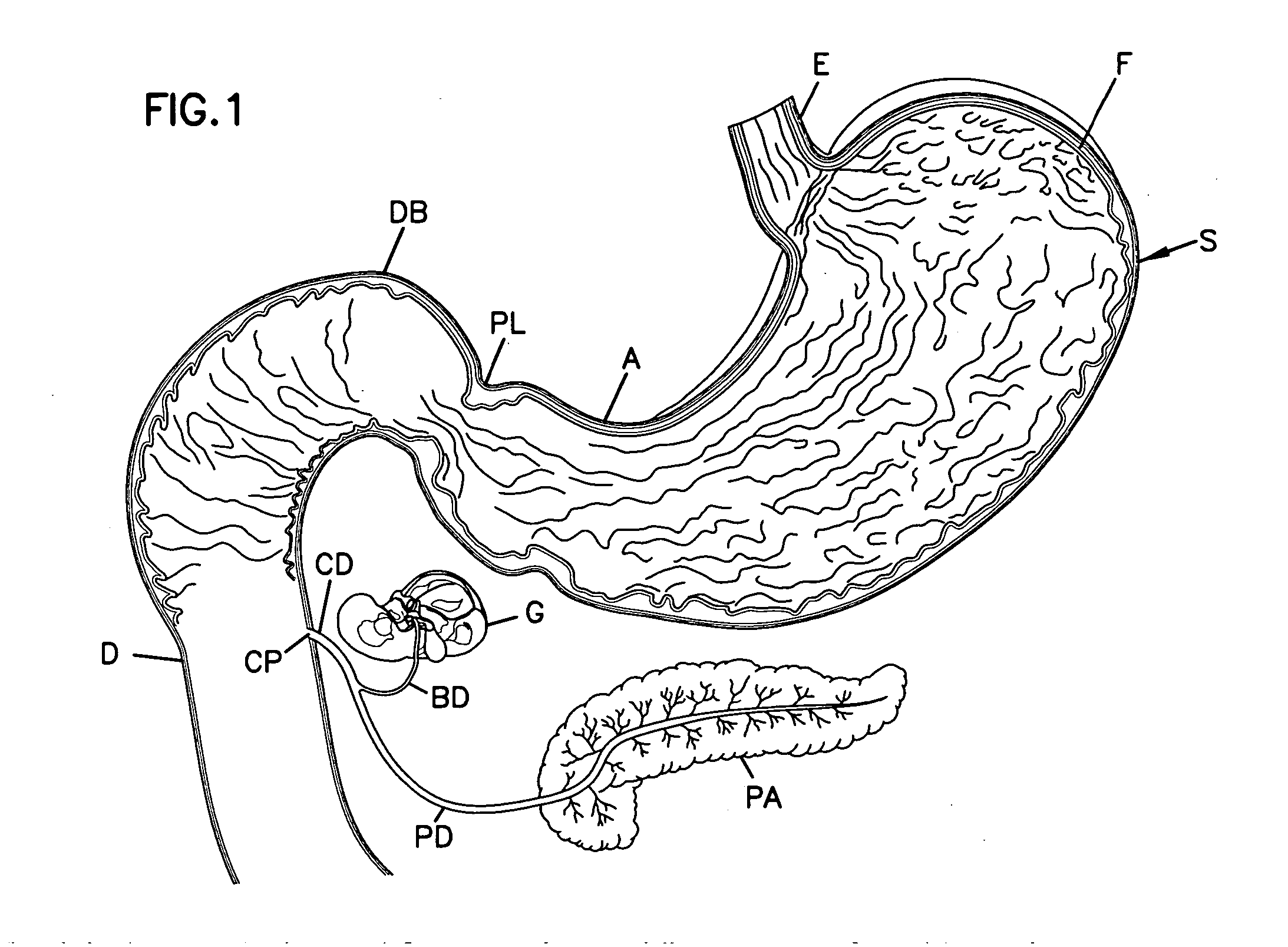Obesity treatment and device
a technology for treating obesity and devices, applied in medical science, surgery, other nursing devices, etc., can solve the problems of not being suitable for only so-called mildly obese patients, no one treatment can meet the clinical needs of a diverse population, and current bariatric surgery, such as the roux-en-y procedure, is not considered suitable for all patients
- Summary
- Abstract
- Description
- Claims
- Application Information
AI Technical Summary
Benefits of technology
Problems solved by technology
Method used
Image
Examples
Embodiment Construction
[0079] In the following detailed description of some exemplary embodiments of the invention, reference is made to the accompanying figures of the drawing which form a part hereof, and in which are shown, by way of illustration, specific embodiments in which the invention may be practiced. It is to be understood that other embodiments may be utilized and structural changes may be made without departing from the scope of the present invention.
[0080] A. Relevant Anatomy and Physiology
[0081] With initial reference to FIG. 1, relevant aspects of a patient's gastrointestinal system are illustrated. These include the stomach S which is provided with food from the esophagus E. A lower esophageal sphincter LES is shown positioned between the esophagus E and the stomach S. The lower esophageal sphincter normally provides control of reflux of stomach contents into the esophagus E.
[0082] On a proximal or lower end of the stomach S, the stomach discharges into the superior duodenum D which is...
PUM
 Login to View More
Login to View More Abstract
Description
Claims
Application Information
 Login to View More
Login to View More - R&D
- Intellectual Property
- Life Sciences
- Materials
- Tech Scout
- Unparalleled Data Quality
- Higher Quality Content
- 60% Fewer Hallucinations
Browse by: Latest US Patents, China's latest patents, Technical Efficacy Thesaurus, Application Domain, Technology Topic, Popular Technical Reports.
© 2025 PatSnap. All rights reserved.Legal|Privacy policy|Modern Slavery Act Transparency Statement|Sitemap|About US| Contact US: help@patsnap.com



